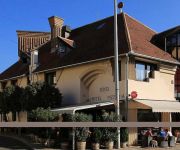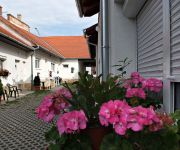Facts and Data
Webpages:
Official Unesco Page
Basis Data:
Unesco World heritage since: 2000
Size of heritage: 3.76 ha
- Buffer zone: 4.87 ha
Coordinates:
Longitude: 18,228°
Latitude: 46,074°
Summary
In the 4th century, a remarkable series of decorated tombs were constructed in the cemetery of the Roman provincial town of Sopianae (modern Pécs). These are important both structurally and architecturally, since they were built as underground burial chambers with memorial chapels above the ground. The tombs are important also in artistic terms, since they are richly decorated with murals of outstanding quality depicting Christian themes.
Location on Map
Show bigger map on Openstreetmap
Early Christian Necropolis of Pécs (Sopianae)
The Early Christian Necropolis of Pécs, also known as Sopianae, is a UNESCO World Heritage site located in the County of Baranya, Hungary. This ancient burial ground holds significant historical and cultural value, providing a glimpse into the early Christian era in the region.
History
The necropolis dates back to the 4th century AD when Pécs, then known as Sopianae, was an important Roman provincial capital. With the spread of Christianity, the city became a center for the new faith, and the necropolis served as the final resting place for its early adherents.
During the 5th and 6th centuries, the necropolis expanded, and numerous tombs and burial chambers were constructed. The site became a significant pilgrimage destination, attracting Christians from far and wide. The tombs were adorned with intricate frescoes and mosaics, showcasing the artistic and cultural achievements of the time.
Over the centuries, the necropolis fell into obscurity and was forgotten. It was only rediscovered in the 18th century when construction work unearthed several ancient tombs. Excavations began in earnest in the 20th century, revealing a vast complex of burial chambers and artifacts.
Current State
Today, the Early Christian Necropolis of Pécs stands as a testament to the rich history of the region. The site covers an area of approximately 4 hectares and contains over 200 burial chambers. These chambers are carved into the soft limestone bedrock and feature intricate decorations and inscriptions.
Visitors to the necropolis can explore the underground tombs, which are connected by a network of narrow passages. The chambers vary in size and design, with some accommodating multiple burials and others reserved for individuals or families. The frescoes and mosaics adorning the walls depict scenes from the Bible and offer insights into the religious beliefs and artistic techniques of the time.
One of the most remarkable features of the necropolis is the presence of early Christian symbols, such as the Chi-Rho monogram and the fish symbol, which are carved into the walls and tombs. These symbols serve as a reminder of the significance of the site in the early spread of Christianity in the region.
The necropolis is also home to a small museum that displays a collection of artifacts found during the excavations. These include jewelry, pottery, and funerary objects, providing further insights into the lives and customs of the early Christian inhabitants of Sopianae.
The Early Christian Necropolis of Pécs is not only a site of historical importance but also a place of cultural significance. It serves as a reminder of the early Christian heritage of Hungary and offers visitors a unique opportunity to explore the ancient burial practices and artistic achievements of the time.
Hotels and places to stay
Adele Boutique Hotel
Sopianae
Millennium
Palatinus City Center
Arkadia
Hotel Diana
Kálvária Rácz
Főnix
Centrum Apartmanhotel
Hungária Apartments
Videos from the area
Videos provided by Youtube are under the copyright of their owners.


















